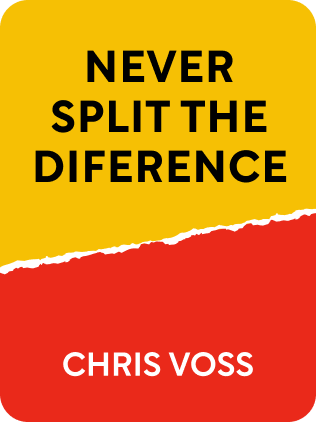

This article is an excerpt from the Shortform book guide to "Never Split the Difference" by Chris Voss and Tahl Raz. Shortform has the world's best summaries and analyses of books you should be reading.
Like this article? Sign up for a free trial here .
What is tactical empathy? How can it help you get closer to your desired outcome in a negotiation?
Tactical empathy is the act of acknowledging your negotiation opponent’s feelings in the pursuit of your end-term goal. It doesn’t mean agreeing with your opponent but simply demonstrating that you understand where they are coming from.
Keep reading for more about tactical empathy and how to use it in a negotiation.
What Is Tactical Empathy?
When it comes to negotiating, emotions are not the obstacle: they’re the solution. It’s all about being empathetic, recognizing the other person’s feelings and motivations, and getting them to feel that they’re safe with you. Ignoring their needs won’t work in any negotiation: They’ll just become frustrated and uncooperative.
But to influence your counterpart’s emotions, you first need to identify them. Here we discuss how you can first pick out your counterpart’s deeper emotional drivers, and then use a tactic called labeling to bring them out into the open.
Tactical empathy is understanding someone else’s feelings in order to get what you want from them. It’s about recognizing their perspective and feelings and vocalizing it, in order to get what you want.
- Tactical empathy is not the same thing as sympathy: You’re not agreeing with them. You’re understanding them and acknowledging their feelings.
- You gain crucial insight into why someone behaves the way they do when you practice tactical empathy. This makes their behavior not only more understandable, but predictable too: You’ll gain an invaluable advantage in negotiations because you’ll be able to anticipate their next move.
Example: Creating Empathy—With A Kidnapper
As an example, Chrisdiscusses his negotiations with Abu Sabaya, a violent kidnapper in the Philippines. When Sabaya kidnapped an American, he claimed he was doing so in exchange for “war damages.” In other words, he believed that he was engaged in a noble struggle for the rights of the oppressed Muslim minority in the Philippines.
Obviously, the American hostage negotiators thought Sabaya’s self-image and professed cause was utterly divorced from reality. But that was irrelevant: the negotiators still needed to show empathy for Sabaya’s beliefs to be able to work with him and bring the hostage standoff to a peaceful resolution. Over the course of months, they were able to identify and summarize Sabaya’s worldview and build the rapport they needed.
(Shortform note: Voss doesn’t actually provide the extended dialogue for how he and his team reached this breakthrough in the book, but we’ve created one here to demonstrate how summarizing would work in practice.
Sabaya: “We’ve been talking for months, and I don’t think you Americans are even trying to understand why I’m doing this.”
FBI: “It sounds like you think we don’t care about your motivations or ideology.” (Label)
Sabaya: “You don’t, and you’ll only have yourselves to blame when I execute this hostage for all the world to see!”
FBI: “You’re fighting for your people. You believe that Filipino Muslims have been oppressed for centuries by Catholics, even down to the present day with fishing rights. You’re resorting to violence because you feel that all the other options haven’t worked. It all seems so tragically unfair and it makes sense why you’re so angry.”
Sabaya: “That’s right!”)
When they were rewarded with a “that’s right” after accurately summarizing his claims of oppression, they knew they had made the crucial breakthrough.
Exercise: Practice Tactical Empathy
Answer these questions to learn more about how other people think and feel.
Have someone else’s actions ever seemed perplexing to you because didn’t know or understand what they really wanted? Describe the situation. In the future, how could you apply some of the tactics you’ve learned to uncover people’s real wants and needs?
Practice mirroring. Write down what someone who was upset with you recently said to you. Now write a response, using the last 3 words in your reply. What do you say?
Practice an accusation audit. Remember a time when someone was unhappy with you. Now do an accusation audit: “I’m sorry. You probably think I’m…”

———End of Preview———
Like what you just read? Read the rest of the world's best book summary and analysis of Chris Voss and Tahl Raz's "Never Split the Difference" at Shortform .
Here's what you'll find in our full Never Split the Difference summary :
- Lessons learned from years as an FBI hostage negotiator
- Why negotiation is about emotional appeals, not rational ones
- The 5 methods for tactical empathy, which gets you what you want by focusing on the other person's feelings






